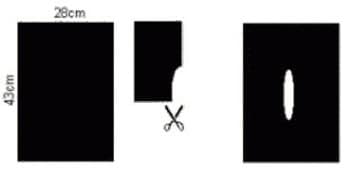
Most beekeepers insert some kind of inner cover between the top super and the hive lid. Although used overseas, inner covers or ceilings made of plywood or masonite with a rim of battens all round to provide beespace above top bars are not normally used in Australia. However, mats made of plastic, floor vinyl, carpet, hessian and other similar materials are commonly used here. Various experienced Australian beekeepers champion the use of hive mats in a variety of materials and designs.
Our own Cec Mercer uses and recommends a mat of his own design. The Mercer Mat can be made easily and inexpensively by any beekeeper. It is specifically designed to provide appropriate ventilation to reduce excessive moisture in the hive, but it also useful in:
- deterring the building of burr comb in the hive lid;
- encouraging the bees not to propolise ventilation holes in the lid; and
- assisting winter storage of empty drawn comb.
The Mercer Mat is a sheet of plastic, cut to allow air to rise on all four edges of the mat as well as up between the top bars of the central two frames of the top super. The mat for the standard 8 frame hive should be no wider than 28cm, nor longer than 43cm. The rectangular sheet is then folded into quarters and a section cut out of the folded edge such that, when the sheet is opened out, an elongated oval hole is made in the sheet. The resultant hole should be 2 to 3 cm across and 15 to 20 cm long.
 |
A wide variety of plastic sheeting can be used to make these mats. However, any non-absorbent sheeting that can be cut to the appropriate shape may be used. There is advantage in using a material that is easily obtainable, easily cut and cheap.
The mat is laid across the top of the frames under the lid, providing a ventilation gap all around and between the middle top bars.
The main principle behind the design of the Mercer Mat is that the greatest danger to the health of the colony in winter is not cold, but excessive moisture. The cluster is
the effective temperature management tool of the wintering colony; but wetting of the cluster by condensation of moisture expired by the bees can greatly reduce that effectiveness. The central opening in the mat allows the colony to regulate ventilation of the winter cluster and better control humidity and temperature within the cluster. The design assumes that the hive lid is fitted with ventilation holes to the outside.
The mat is also effective in minimising the development of burr comb in the hive lid. Comb will not be built in the area between the mat and the lid unless the beekeeper is slow in adding additional supers when a flow is in progress and the colony runs out of room below the mat.
Bees will often block or reduce the size of ventilation holes in the hive lid with propolis; however, when the Mercer mat is used it is very rare for those ventilation holes to be even partially propolised.
The mat is particularly useful when supers of extracted comb are stored on the hives over winter. Rather than treating stored empty combs throughout the winter with PDB or Phostoxin, one super of empty comb can be stored on each hive, above a mat. The bees will not occupy the stored frames in normal circumstances but, in warmer moments over the winter, will venture into the stored box and generally keep it free of wax moth. If an unexpected flow occurs in early Spring, the bees will use the stored combs if they run out of space below the mat.

Be the first to comment